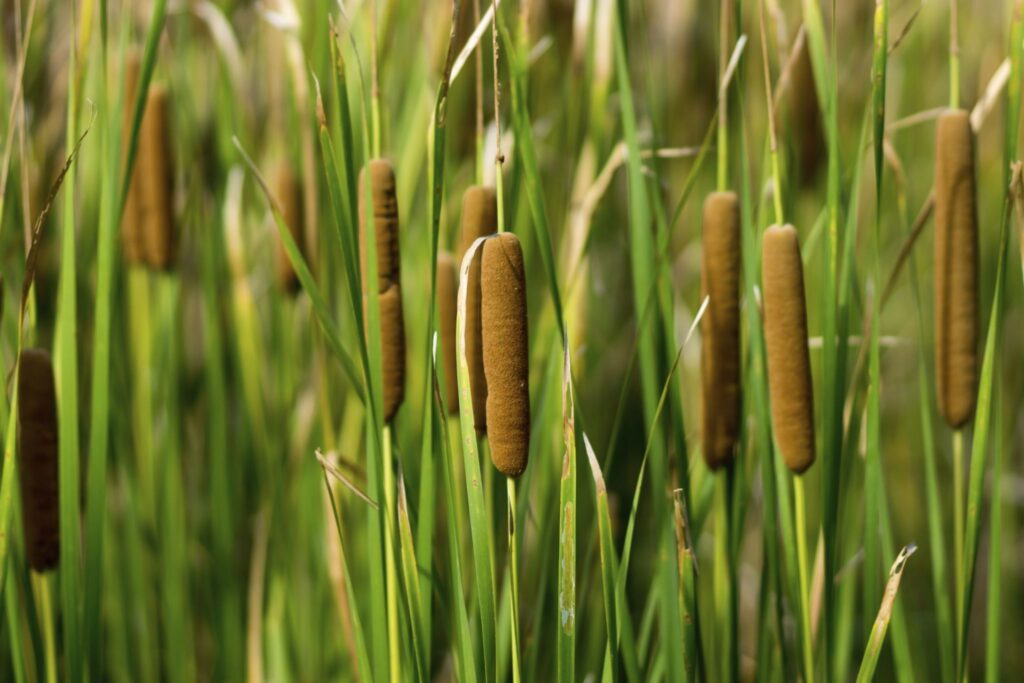When you pass by different bodies of water like lakes, ponds, rivers, or marshes left to nature’s discretion, you will most likely find cattails. When you ask those responsible for maintaining areas with cattails, you either hear them raving about it or cursing its existence. Both these statements come for valid reasons!
When landscaping natural ponds or bodies of water in your landscape, cattails are both a delight and somewhat of a headache if not controlled. That said, if you plan to have cattails around your landscape, you have to learn how to transplant cattails properly to keep them growing even after the move. So read on!

How to Transplant Cattails
Cattails, or typha latifolia, are known for their sword-shaped foliage and cylindrical brown seed heads. They are adaptable and thrive in USDA hardiness zones 2-11, cultivated as ornamental plants in water gardens.
Cattails are ten-foot tall and have narrow leaves that have brown seed heads looking like cigars. They produce clumps of stems that come from rhizomes growing in muddy soil. You can consume the roots, stems, and seed heads, while other parts may be used for medicinal use. The plants also have industrial uses, with some parts distilled to ethyl alcohol, antifreeze, or even as solvent.
They can grow well from divisions and seeds, with their seeds germinating rapidly under hot and moist conditions. After a few months, they will be ready to transplant, provided that they are dug up properly.
To do this, follow these steps:
- If you plan to transplant cattails from public bodies of water, check with the local government to see if it is legal to do so. If it’s allowed, collect information on the best area to find and dig up cattails to plan ahead.
- When you’re about to head on out to dig up cattails, prepare by wearing old clothes, gloves, and waterproof boots, as this would be a messy task. For transplanting them to your landscape, look for the stand of cattails during the early spring season while their shoots just began growing. If used for food purposes, harvest them during the fall and winter seasons.
- Using a shovel, dig gently around clumps of cattail shoots, 6-8 inches from the stalks’ base. Afterward, dig to the soil, around 12-18 inches deep, so you do not damage any of the rhizomes. Bend the shovel handle backward gently, doing so as if you were pulling a lever. Repeat this around cattails roots, which will help pry them off their surrounding soil.
- Lift root balls carefully from their ground, and remove all excess mud and dirt from the rhizomes by rinsing them with water. Wrap rhizomes in plastic bags to prevent them from drying out when you take them home. It’s important to clean the rhizomes properly before sowing for best performance.
- Remove rhizomes from their bags when you’re at home or at the destination of the landscape. Transplant harvested cattails in the location you’d like to place it in, digging holes that are large enough to house rhizomes. Place each rhizome in the center of every hole, adding some loose dirt around.
- Once you have placed the rhizome in each hole, tamp down the dirt gently yet firmly. Afterward, water the transplanted cattails with a garden hose.
Besides what I mentioned above, here are extra useful tips to keep in mind when transplanting cattails:
- We recommend that you transplant cattails to pots or areas filled with moist and fast-draining soil.
- Allow it to grow under part shades with an indirect light source for 1-2 months.
- Water it weekly or as needed, giving it 1-2 inches of water every watering session. You may need to adjust the frequency of watering sessions based on the season and current weather.
- When the cattails are grown, you may transplant them again to a permanent location come early fall, preferably after your area’s first rainfall. Make sure each plant is 3 feet apart from one another, placed in soil that stays moist consistently. Do prune back its leaves by half so the plant’s energy will be more focused on its root production rather than leaves, which will help with its growth and overall health.
And you’re done! You can now enjoy cattails in your landscape, provided that you care for them properly and provide the requirements and nutrients for proper growth.
To further help you find out how to dig up and transplant cattails, check out this insightful video:
Wrapping It Up
Cattails are excellent plants that can be used to decorate any area, may it be indoors or in bodies of water. They are fairly easy to transplant when desired, as long as it is legal to do so if collecting rhizomes from public areas. You may also transplant cattails easily from home to garden, the sky’s the limit with this highly adaptive plant!
Just make sure that you continue providing the right care for it and that you learn how to control its growth, as they tend to sprout and spread like weeds if left unattended. With that said, they are very useful as they are attractive, so take advantage of their uses!
Good luck with transplanting and caring for cattails, happy gardening.